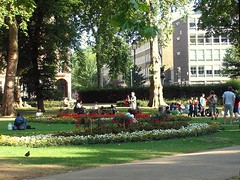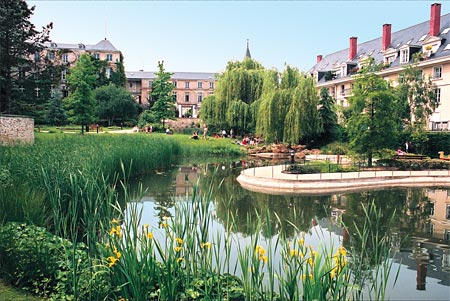Using urban density to support parks, and vice versa

Posted March 9, 2010 at 1:34PM
Today’s title sounds a little counterintuitive, doesn’t it? Using residential and commercial density to revitalize downtowns or bring people closer to rail transit stops makes sense. But aren’t parks and trails supposed to be bucolic, the antithesis of urbanity?
Not necessarily. Writing in the City Parks Blog, Ben Welle notes that parks and people need each other, and we need to bring them together:
“There is a symbiotic relationship between parks and population density. For those living in compact housing around a park’s borders, there is respite, a place to recreate, a back yard where little private outdoor space exists and an amenity that increases property values. For the park, there’s the “eyes” that make it safer, more property taxes to keep it maintained, nearby users to keep it vibrant and able to maximize its value as a public amenity.”
Ben is assistant director of the Trust for Public Land’s Center for City Park Excellence, so he knows a thing or two about what makes parks work best.  In his post, Ben describes an initiative in Minneapolis that would upzone areas near a popular rail-trail as a revitalization strategy, which is of course part of the game plan in Indianapolis and Atlanta as well.
In his post, Ben describes an initiative in Minneapolis that would upzone areas near a popular rail-trail as a revitalization strategy, which is of course part of the game plan in Indianapolis and Atlanta as well.
Ben made a similar point in a blog post from early last year, drawing from an article by Brad Broberg in the National Association of Realtors’ On Common Ground:
“Balancing the yin of green space against the yang of greater density is a cornerstone of smart growth.
“Smart growth encourages compact development as an antidote to sprawl. Preserving green space is part and parcel to that approach. The green space makes the density more palatable and the density makes the green space more desirable.”
While many of us – including myself – love remote wilderness and natural areas, few of us want our city parks to be empty. When Nos Quedamos was allowed to plan Melrose Commons in the South Bronx, for example, one of their most important changes from the unpopular original city plan was to eliminate a large centrally located park area and, instead, redistribute the green space in smaller parcels around the neighborhood, precisely so there would not be vast areas without frequent activity.
Props to Ben for bringing the topic back up. It's an important one.
(Cross-posted on the National Housing Institute's Rooflines.)
